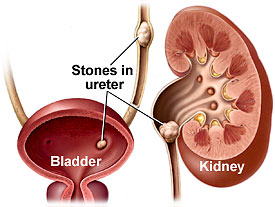Asbestos is a very dangerous, yet underestimated substance in terms of a lack of awareness campaigns in the media to help others understand exactly what it can do. The dangers and implications that asbestos can have on our health if exposed to a few fibres are not taken very seriously by many. This alone could mean that there is a greater danger in regards to further unnecessary exposure.

The symptoms are not apparent for years and there is no known treatment that treats asbestos related diseases.
Asbestos exposure is so dangerous that there is nothing much doctors can do to save those who have Mesothelioma (type of cancer) and more research needs to be carried out in the area as there are still a large number of people dying from asbestos related diseases each year, even now. Further research could lead to opportunities to find asbestos diseases early and perhaps prevent it from causing any long term damage through removal.
Dealing with Asbestos
Not only do we need to identify where asbestos is apparent and monitor potential asbestos threats, but correct removal and disposal of asbestos is paramount. To this day, people are either ignorant or unaware when it comes to safe disposal of asbestos; there have been recent cases in the UK whereby people have left asbestos exposed in streets and in public toilets.
This is a growing concern and problem that is happening more and more often and not just in the UK, but all over the world. During the late 1980’s, the UK government banned asbestos from being used in any of the new build properties due to the health issues that asbestos exposure could cause and the seriousness.
Correct Disposal of Asbestos Contaminated Items
Asbestos in England and Wales is classed as ‘Hazardous Waste’ when there is more than 0.1% of asbestos present. Substances that have traces of asbestos in them can legally be disposed of in sewage systems. In Scotland, asbestos is classed as ‘Special Waste’ and again if there are asbestos levels of 0.1% or greater.
In order to dispose of asbestos correctly, there are certain rules and regulations that need to be adhered to:
- Any asbestos waste must be put into a UN approved piece of packaging that displays a CDG hazard sign with the asbestos code and information visible to others.
- Double wrap the asbestos and use an inner bag that is red and clearly illustrates asbestos warnings with a clear bag as the outer bag, which must display the CDG sign.
- If moving the waste, a sealed skip or a vehicle that has a separate compartment for the asbestos, lockable and cleanable must be used for health and safety reasons.
- If a vehicle or skip is not available with the features mentioned, arranging for alternative transport by a registered waste carrier is what’s required.
- Safe disposal of asbestos requires a licensed site.
- Make sure to complete a waste consignment note and keep copies of documents for a minimum of three years.
- If uncertain in regards to the safe disposal of asbestos, ask an asbestos removal expert for advice or visit the HSE website for further information on asbestos and best practices.
Image source: ivydawned @ flickr.com


 (5 votes, average: 4.20 out of 5)
(5 votes, average: 4.20 out of 5)








